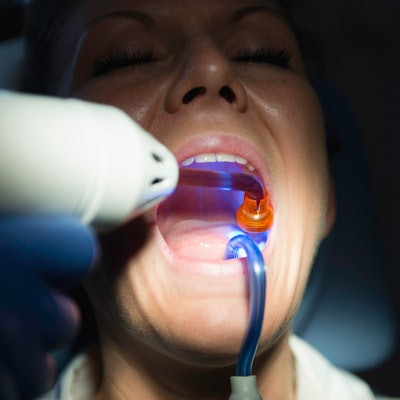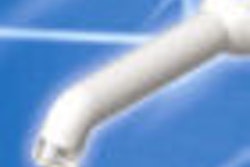
Do you use a curing light in your practice for restorations? How much do you know about their practical use, how to limit your exposure, and how to use it safely?
Researchers from Norway sought to identify knowledge gaps regarding curing lights and personal protection while using these lights in a study in the Journal of Dentistry. They found that almost a third of surveyed dentists used inadequate eye protection while using these lights, and many were not aware of the irradiance value of the curing light they were using, which meant the curing time could not be determined accurately.
"The questionnaire study identifies specific knowledge gaps among Norwegian dentists with regard to curing lights and use of personal protection," the authors wrote (J Dent, March 2017, Vol. 58, pp. 67-73).
The study was led by Simen Kopperud, DDS, PhD, of the Nordic Institute of Dental Materials in Oslo.
Optical radiation
For restorations, many practitioners are now using restorative materials that contain photoinitiators that require absorption of optical radiation in the 350- to 500-nm wavelength range to set. The most common instrument used to set these materials is a curing light based on a light-emitting diode (LED). However, as the emission peak for these lights is in the range between ultraviolet (UV) and visible radiation, frequent use of these instruments may be a health risk to practitioners.
The study authors wanted to investigate dentists' exposure to curing light and find out about the practitioners' knowledge on practical use and technical features of their curing lights, as well as safety awareness.
The researchers electronically sent a questionnaire to more than 1,300 dentists in the Public Dentistry Service in Norway. Participants were asked the following questions:
- Approximately how many restorations do you place on average during a normal working day?
- For how many seconds do you light cure one normal layer of resin composite?
- Do you use any kind of eye protection when light curing restorations?
- How old is your curing light?
- Do you know the irradiance of your curing light?
- Whose curing time recommendations do you follow?
- Do you have specific routines for maintenance of your curing light?
More than 55% of those surveyed responded. The study authors reported that these dentists spend almost 60% of their working days placing restorations, with a mean of almost eight per day. The average length of time spent light curing one normal layer of composite was 27 seconds.
“The questionnaire study identifies specific knowledge gaps ... with regard to curing lights and use of personal protection.”
Almost a third of dentists did not use adequate eye protection against blue light, the authors also reported, but they noted that younger dentists were more likely to use protection.
The authors wrote that the technique of looking away from the light while placing the restoration is not recommended, as it may cause the curing light to be moved away from the restoration, leading to a lesser light dose to the restorative material.
Compounding this potential danger, the mean curing time for lamps of the lower reported irradiances was similar to a time that the international guidelines for limit values for blue light on the eyes consider excessive.
More than 75% of respondents did not know the irradiance value of their curing lights, meaning they could not be certain of the curing time necessary. Knowing the irradiance is essential for a successful treatment to both ensure sufficient curing of the composite and avoid possible thermal damage to tissues, according to the authors. Their concern was that the survey results indicate a "high possibility for incorrect curing procedures."
Among the 75% of respondents who did not know the irradiance value of their curing light, more than 17% did not perform regular maintenance of the lights compared with just over 3% of other respondents.
Alarming results
The authors acknowledged that surveys can be limited and that nonvalidated self-reports may not always reflect the actual behavior. However, they noted that the response rate was adequate and that the eye protection replies were similar to a previous survey study, which they characterized as "indicating frank replies from the respondents."
The study authors reported finding some of the results alarming.
"Typical curing times with light of irradiance ... combined with a typical number of restorations performed per day may exceed the hazard limit values for reflected blue light to eyes," they concluded. "This is alarming, considering that one-third of the responding dentists did not protect their eyes sufficiently from blue light."



















